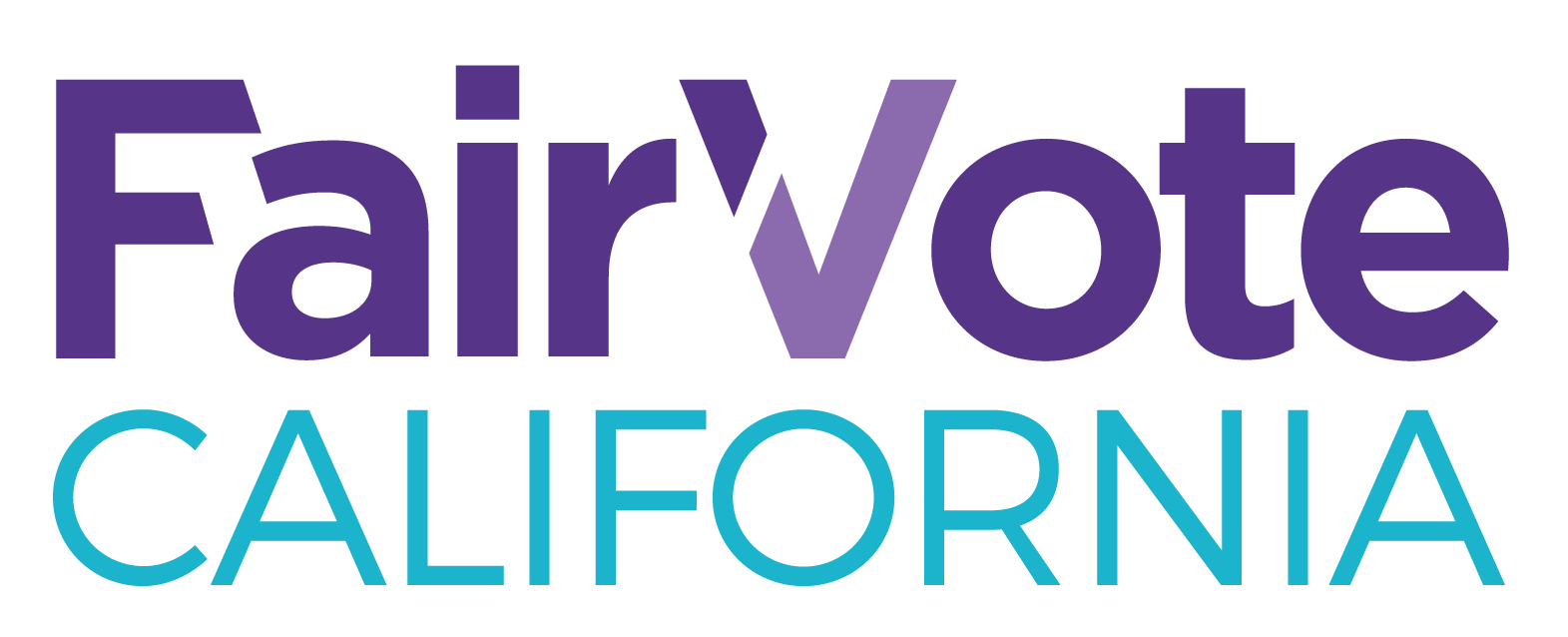Press Release: San Francisco Ranked Choice Voting Results: A First Look
FOR IMMEDIATE RELEASE:
November 7, 2018
Contact: Pedro Hernandez at [email protected]
San Francisco Ranked Choice Voting Results: A First Look
Trends Suggest Voters Keep Using Well
75.8 percent of District 10 Voters Indicated 2-3 Different Candidates
SAN FRANCISCO -- Early ranked choice voting (RCV) election results in the Bay Area suggest that voters understand their ranked choice voting ballots well. After analyzing the first release of the 235,393 ballots received by the Department of Elections on Nov. 7, FairVote California finds that San Francisco voters continue to make effective use of ranked choice voting. Many ballots await tallying, but here is a preliminary assessment.
-
Voters handle RCV ballots for Supervisor better than non-RCV ballots for Superintendent of Public Instruction, Board of Education, and Community College Board. In the early election results for Superintendent of Public Instruction, there were 823 overvotes that invalidated ballots, which is a higher rate than the 279 overvotes across the five Board of Supervisors elections. In other words, a voter was more likely to make a error on a vote-for-one non-RCV ballot for Superintendent of Public Instruction than their RCV ballots for Supervisor.
-
Furthermore, there were 9,042 overvotes in the vote-for-three San Francisco Board of Education election, and 1,560 overvotes in vote-for-three Community College Board election. This shows that voters understand their ranked ballots more than plurality, vote-for-three city-wide elections.
-
Furthermore, there were 9,042 overvotes in the vote-for-three San Francisco Board of Education election, and 1,560 overvotes in vote-for-three Community College Board election. This shows that voters understand their ranked ballots more than plurality, vote-for-three city-wide elections.
-
Voters more likely to vote for their Supervisor than for Lieutenant Governor. Of all ballots processed by the Department of Elections on Tuesday night, 12 percent of San Francisco voters did not vote for Lieutenant Governor. In local Supervisor elections, the undervote rate for District 4 was 7.6 percent, and went as high as 10.5 percent in the largely uncompetitive District 8 election. This is part of a pattern in which city voters are more likely to vote in city elections with RCV than they are in pre-RCV two-round elections.
- High use of rankings. Voters in RCV Supervisorial elections used their rankings effectively. In District 4, 76.5 percent of voters indicated 2-3 different candidates. District 10 saw a similar rate of 75.8 percent, and in District 2, 71.1 percent of voters saw great use of their ranked ballots.
“Though these numbers are preliminary, they do underscore findings from our recent report that San Francisco voters have effectively used ranked choice voting—and it keeps getting even better,” said FairVote California Deputy Director Pedro Hernandez. “Voters were very engaged in the election for their Supervisor.”
This initial release of data is based on vote-by-mail ballots that the Department of Elections (DOE) received and processed before Election Day, as well as 3,000 ballots cast at the City Hall Voting Center the days leading to Nov. 6. John Arntz, director of the San Francisco Department of Elections anticipates 70% voter turnout, so the recent count likely reflects about two-thirds of the final vote.
Soon after 4 p.m Wednesday, the Department of Elections released its third preliminary report of ranked choice voting results. Today, Gordon Mar leads Jessica Ho in the final “instant runoff” round of the ranked choice voting election for District 4 by 12.6 percentage points. These early results show Mar picking a larger share of second- and third-choice support from defeated candidates. But the results could be affected by the anticipated influx of vote-by-mail ballots the Department of Elections will tally this week. District 2 also could be affected by late-tallied ballots, where Catherine Stefani lead over Nick Josefowitz by 1,374 votes in the final tally.
“Of the votes counted so far, at least 74 percent of voters ranked at least two candidates in the multi-round elections, showing that San Francisco voters are engaging with the ranked choice voting system,” Hernandez said. “RCV empowers San Franciscans to vote for the candidates they prefer without fear of wasting their votes.”
Notably, the speed of releasing results depends upon how many ballots the Department of Elections has to process, not ranked choice voting. Once the Department of Elections has processed a batch of ballots, it can run the RCV tabulation on that batch and release those results in about an hour, according to Director John Arntz. Next year, with new voting machines in place, even that one-hour interval to run the RCV tabulation will not be necessary -- it will essentially be instantaneous.
FairVote California and FairVote will be analyzing results tonight and in the days ahead. For comment, please contact FairVote California Deputy Director Pedro Hernandez at [email protected].
# # #
Background
Under ranked choice voting, a candidate is elected as soon as they secure more than half the vote. If no candidate reaches majority of first-choice rankings, an instant runoff begins where the candidate with the least amount of support is eliminated, and votes for that candidate are counted for those voter’s next choice. This process is repeated until a candidate reaches 50 percent+1 of votes and is declared the winner. The city runs the tally down to the final two candidates to show how the winner fared against the top opponent.
San Francisco has used RCV to elect 18 city offices: its mayor, board of supervisors, and six other citywide offices since 2004. More than a dozen cities and the entire state of Maine have adopted ranked choice voting Using RCV enables voters to rank candidates on the ballot rather than voting for a single candidate, which can limit voter participation and contribute to an uneven playing field for diverse and underrepresented voices in cities like San Francisco. More information about ranked choice voting can be found here.
# # #
